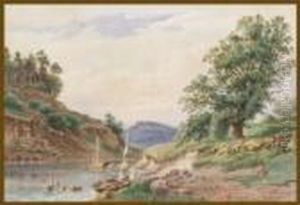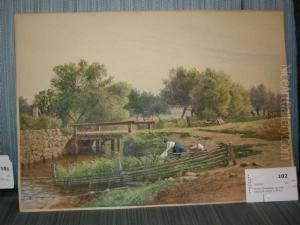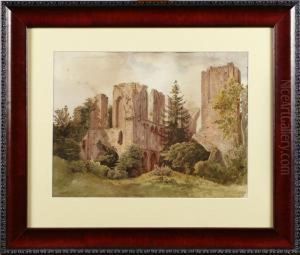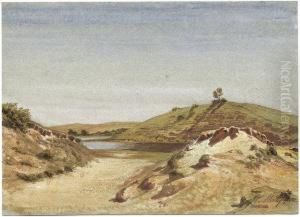Wilhelm Streckfuss Paintings
Wilhelm Streckfuss was a German artist, born in 1823 and passing away in 1895. His contributions to art, particularly in painting, were part of the broader European artistic movements of the 19th century. Streckfuss's work is often characterized by its detailed realism and the ability to capture the nuances of light and shadow, a testament to the skills that were highly valued in his era. Despite the prominence of figures like Streckfuss during their time, many such artists have not remained household names, their legacies overshadowed by contemporaries who engaged more directly with the avant-garde movements that defined the late 19th and early 20th centuries.
Throughout his career, Streckfuss was deeply influenced by the Romanticism that dominated European art in the early to mid-19th century. This influence is evident in the subject matter he chose, which often leaned towards dramatic landscapes, historical themes, and the exploration of human emotion through portraiture. His works, like many of his contemporaries, reflect a fascination with nature and a keen observation of human character, traits that aligned well with the Romantic ideals of individualism and emotional expression.
Despite the lack of extensive documentation on his life compared to more widely celebrated artists of his time, Wilhelm Streckfuss's contributions to the art world remain valuable. His ability to convey depth, mood, and atmosphere in his paintings speaks to his mastery of technique and his understanding of the aesthetic and emotional potential of visual art. After his death in 1895, Streckfuss's works continued to be appreciated by art historians and collectors, although they have not achieved the same level of recognition as some of his peers.
The legacy of Wilhelm Streckfuss, while perhaps not as prominent as that of other artists from his period, is a reminder of the rich tapestry of talent that contributed to the development of 19th-century European art. His dedication to his craft and his ability to capture the essence of his subjects make his work a valuable part of the historical record, offering insight into the artistic trends and cultural attitudes of his time.







